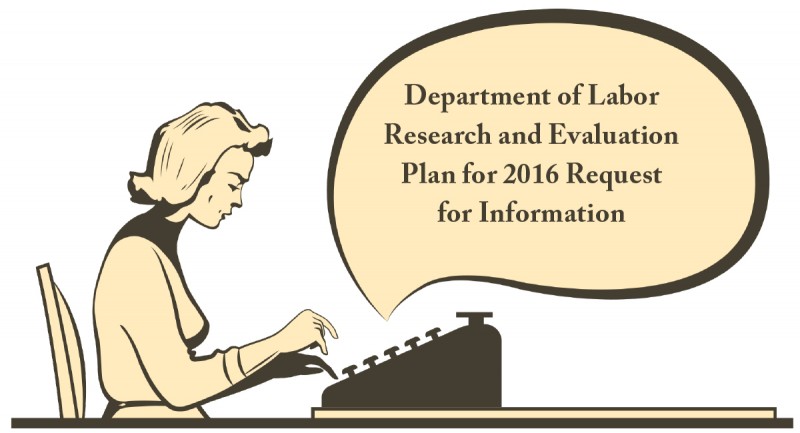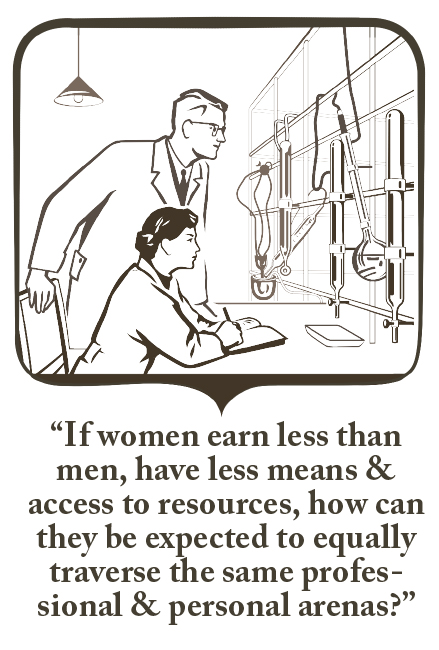
Dear Sharon I. Block,
Thank you for the opportunity to provide comments on the Department of Labor’s (DOL) Research and Evaluation Plan for 2016 Request for Information (RFI).
Of the Statistical Analysis of Trends and Surveys, I believe Gender Patterns and Pay in Occupations and Industries along with Caregiving and Women’s Retirement Security are of great importance to the evaluation plan and its practitioners.
The U.S. Census Bureau reports that women’s median income is 79 percent of men’s median income. This is blatant inequality that needs to be addressed and rectified in order to encourage and secure the progress of women in the workforce and in our country. If women earn less than men, have less means and access to resources, how can they be expected to equally traverse the same professional and personal arenas?
 In order for women to continue to grow and progress, they need to earn what they deserve, and there needs to be a greater amount of women in C-suite executives roles in companies throughout the U.S. Women are largely overlooked when it comes to executive positions, even though companies with gender diverse boardrooms and executive offices have been proven to outperform firms with male-dominated executive teams. Addressing these problems will prove extremely beneficial to the American workplace; they are worthy focuses of the DOL’s time and resources.
In order for women to continue to grow and progress, they need to earn what they deserve, and there needs to be a greater amount of women in C-suite executives roles in companies throughout the U.S. Women are largely overlooked when it comes to executive positions, even though companies with gender diverse boardrooms and executive offices have been proven to outperform firms with male-dominated executive teams. Addressing these problems will prove extremely beneficial to the American workplace; they are worthy focuses of the DOL’s time and resources.
Recent reports affirm that women fall short—much more than their male counterparts—of saving the money they need for retirement. There are several contributing factors to this disparity, from women living longer and having higher medical expenses than men to them earning about 79 cents for every dollar a man earns. The gender pay gap is significant and elusive; at first glance, the gap seems to represent a difference of 21 cents in pay, but we must consider this figure in relation to the 79 cents women earn and not the dollar men earn, in which case it becomes clear that women earn 27 percent less than men.
Everyone should be able to retire with assurance; women’s retirement security is a prevalent issue that needs to be resolved.
Another topic the DOL should consider is maternity leave. The importance of established and accepted maternity leave cannot be overstated. Starting a family and having a rewarding career are achievements that can take place simultaneously. The struggle to make this a reality in the American workplace is common. The U.S. offers the least amount of paid leave in the world, and recent studies show women working at companies that offer paid leave often endure inter work environment scrutiny for taking time off.
When addressing maternity leave, it is also necessary to consider small businesses. Small businesses do not have the resources of large companies, and therefore may not be able to offer paid leave to employees, however necessary it may be. In these cases, the state or Federal government could provide financial assistance to allow small businesses to offer maternity leave as part of their company cultures. By helping institute maternity leave into the American workplace, the DOL could create a more inclusive work environment in which women are afforded the freedom—as are men—to work and live without needing to constantly consider whether their gender is placing their career at risk.
Sexual harassment in the workplace continues to be an issue, and even more alarming is that it is predominantly accepted and shrouded in the rare instances when it is exposed. There needs to be a better system for reporting instances of sexual harassment, and the work environments where employees are condemned for voicing these grievances need to be eliminated. We need to hold culprits accountable and protect employees being harassed.
From the gender pay gap to maternity leave, there are several issues facing working women. These setbacks need to be addressed to continue asserting equality in this country. By incorporating these issues into the Department of Labor’s (DOL) Research and Evaluation Plan for 2016, NAWRB believes they can be productively addressed and true headway can be achieved.

 Login
Login
